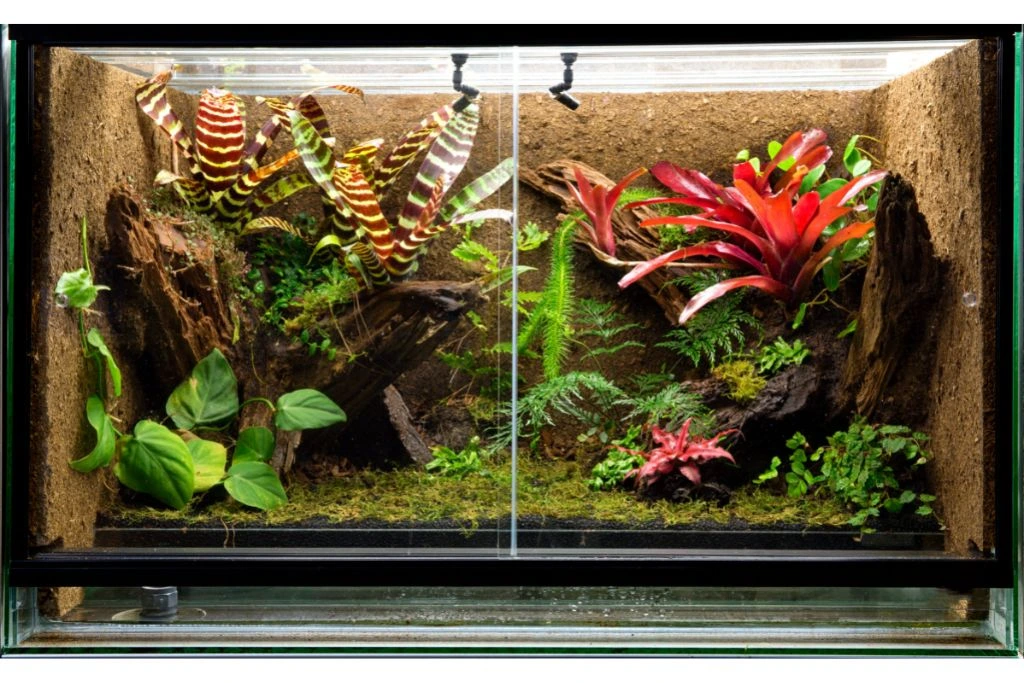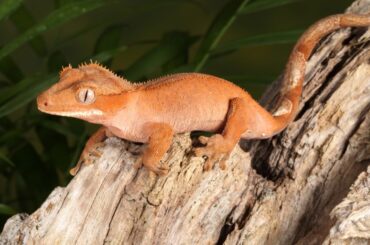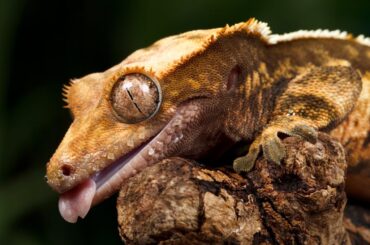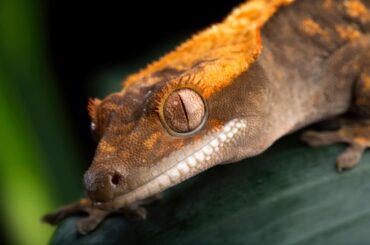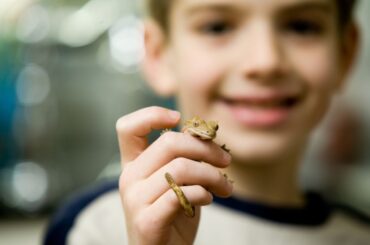The leopard gecko is a beautiful creature that you can find in many homes, but there are some things you should know about them before getting one of your own. One of these things is how to keep them warm and happy by giving them the appropriate temperature.
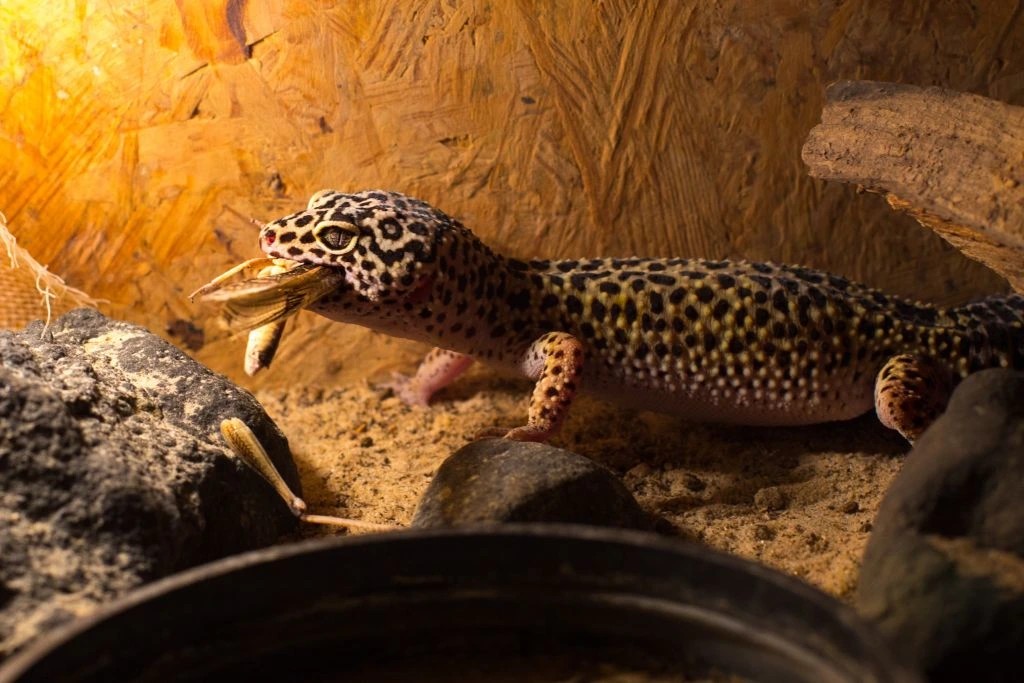
You must be aware of the right temperature to keep them growing as healthy as possible. Keep in mind that while being increasingly domesticated and thriving well in captivity, leopard geckos still have special needs.
What Is the Ideal Temperature for Leopard Geckos?
The leopard gecko temperatures should be between 70 and 90 degrees Fahrenheit. Leopard geckos are cold-blooded, which means they need a heat source to regulate their body temperature. That’s why you need to maintain this leopard gecko temperature range.
Natural heat sources include rocks or logs in their enclosure, as well as other items that can provide insulation from the ground. This is something they won’t have access to once you take them as your pets.
When you keep them in your home in an aquarium tank, adding a basking light may work well as long as your leopard gecko isn’t too large and can fit comfortably through the opening where you place its rock or log bedding material.
You will need to measure the temperature in your tank/habitat and make sure it stays above 70 degrees Fahrenheit at all times.
If you want your leopard gecko to be comfortable, then you’ll need some sort of heating source, such as heat lamps or ceramic heating pads. You can get these products at most pet stores. For heat lamps, you may use an incandescent bulb or fluorescent light to provide the right temperature for the leopard gecko. You must maintain the leopard gecko’s temperature day and night.
What Happens to Leopard Geckos if They Don’t Get the Right Temperature?
If the temperature is too high, the leopard geckos will die. The same goes for temperatures too low. If you don’t know what the right temperature is for your leopard gecko and they are continually stressed or uncomfortable, they could be suffering from stress-related illnesses that can cause death.
You’ll know whether your leopard gecko is stressed by monitoring its behavior. You’ll notice that it will have pigmentation changes, hyperactivity or hypoactivity, anorexia, panting, or changes in feeding preferences.
They may also develop diseases if they’re kept in a warm environment where there’s no ventilation at all, such as an unventilated terrarium.
What Are the Ways To Control the Temperature in the Tank/Habitat?
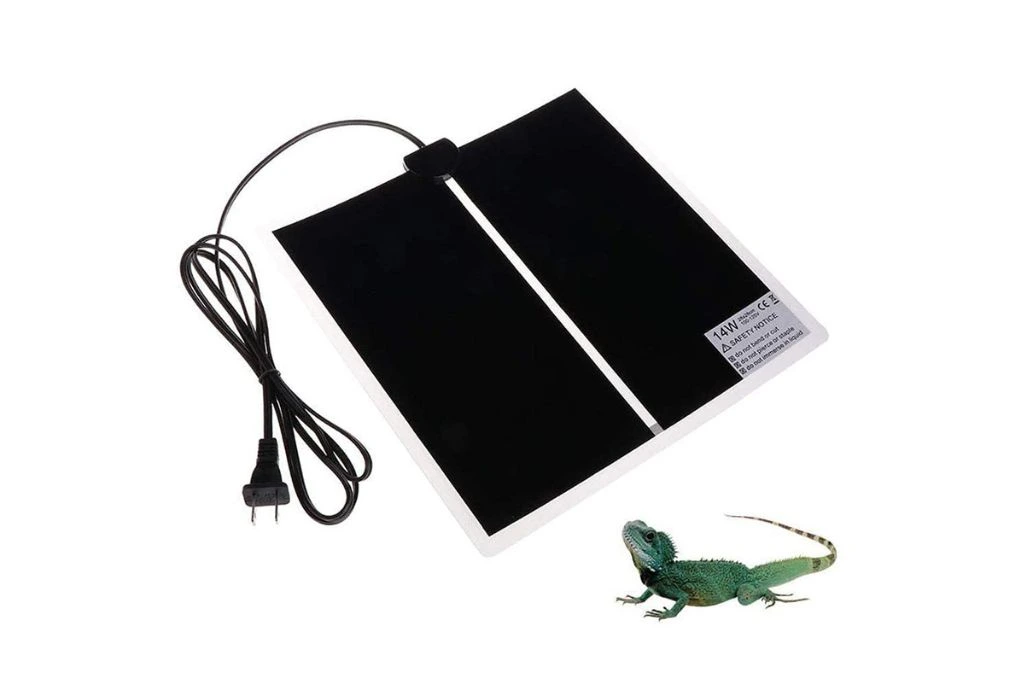
Temperature control is important in a leopard gecko’s habitat. Your reptile’s tank should have a cold and hot side. This gives your cold-blooded reptile a thermal gradient where they will be most comfortable. There are various ways to control the temperature in their tank or habitat.
You can use a heat mat or heating pad to keep the temperature at the perfect level for your pet. A thermostat will allow you to set the temperature manually, while a thermometer will help you monitor the temperature in your tank and know when it needs adjusting.
Leopard gecko’s temperatures, day and night, don’t differ much. Leopard gecko’s temperatures at night shouldn’t be less than 65 degrees Fahrenheit.
You can also use humidity gauges to check on how dry or wet your pet’s cage is, which will affect its ability to regulate its own body temperature. Hygrometers can help you make sure it stays within normal ranges during different seasons of the year.
What Are the Equipment/Items Used To Manage the Temperature in the Tank/Habitat?
There are many options for heating your leopard gecko’s habitat, including heat mats and ceramic heat emitters. The most important thing to remember when using any type of heating device is that the temperature should never be allowed to drop below 70 to 75 degrees Fahrenheit (21 to 24 degrees Celsius).
Heating pad
If you want a simple way to keep your leopard gecko warm while they sleep on its favorite rock or hideout in its tank, then consider buying an inexpensive, fleece-lined toy with built-in thermostat control. This can be placed directly onto the floor to provide warmth year-round, without having access points for outside drafts. Plus, it won’t require electricity!
Just remember to make sure there aren’t any cracks around where this item will rest, so nothing gets inside when pressure changes occur throughout the winter months.
These are more compact than mats but still provide good coverage across large areas, like tanks/habitats where there aren’t many openings through which cooler outside air could pass into then out again once inside such spaces. If using one, make sure not to put too much weight on them because they break easily!
Heat mats
Heat mats are used for basking areas where there isn’t much room for air circulation, like behind rocks or in crevices where there aren’t any vents that blow cold air around. This ensures your leopard gecko doesn’t get too hot from being close together without circulation between them, which causes excessive heat buildup.
Maintain Proper Temperature For Your Leopard Geckos
Remember, caring for a leopard gecko is a big responsibility. Aside from following a feeding schedule and maintaining humidity levels, you also have to be mindful of the temperature in their habitat. You should ideally replicate their natural habitat to help them thrive better.
Leopard geckos are among the most popular pet lizards due to their beautiful appearance and easy care requirements. Their low maintenance requirements make them a great choice for beginners, so if you’re interested in keeping reptiles as pets, then this article should be helpful!

